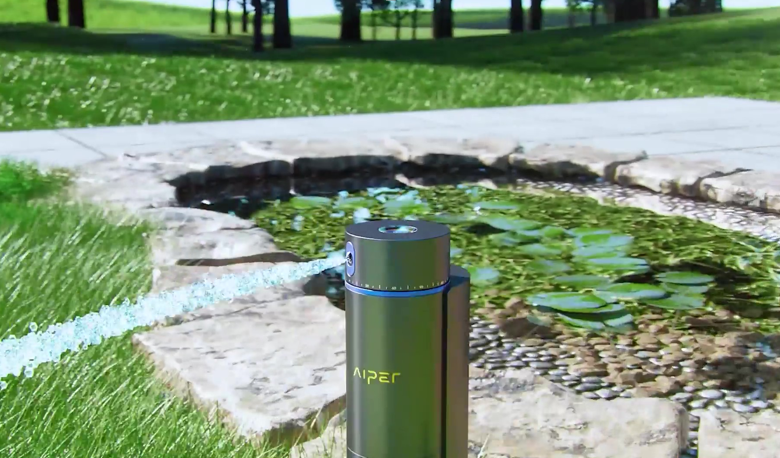The Science Of Soil Moisture: How Often Should You Water Your Lawn

A lush, vibrant lawn is the pride of any Australian backyard, offering a cool, green sanctuary from the summer heat. Yet, maintaining that perfect turf often leads to one of the biggest gardening dilemmas: how often should you water your lawn? Many homeowners fall into the trap of daily, light sprinkling, believing this combats the relentless sun. In reality, this approach is counterproductive, leading to weak roots, increased disease risk, and wasted water.
Mastering lawn hydration is less about following a rigid timetable and more about understanding the principles of soil depth, root development, and plant signals. This expert guide will equip you with the precise knowledge and strategies necessary to establish a sustainable, water-wise watering regimen that builds drought resistance and keeps your turf strong year-round.
The Golden Rule Of Lawn Hydration: Deeply But Infrequently
The secret to a resilient, healthy lawn lies beneath the surface. The goal of irrigation is not simply to wet the grass blades, but to saturate the entire root zone, encouraging the roots to grow deep into the soil where moisture reserves last longer and temperatures are more stable.
Deep, infrequent watering trains your turf to be self-sufficient and drought-tolerant. When you water lightly every day, the roots stay shallow—often in the top 5 centimetres of soil. This leaves the grass entirely dependent on daily surface moisture, making it highly susceptible to scorching and rapid deterioration during a heatwave.
To apply the golden rule, aim for moisture to penetrate the soil to a depth of at least 10 to 15 centimetres during each session. For most established Australian lawns, achieving this depth usually means watering less often. During the peak summer months, this might mean watering deeply two to three times per week, rather than a quick spray every afternoon. In the cooler periods of autumn, or when consistent rainfall is present, this frequency can often be reduced to once a week or even once a fortnight.
Recognising When Your Lawn Is Thirsty
The most precise answer to “How often should you water your lawn” is: only when it genuinely needs it. Your lawn is excellent at telling you when it requires water, provided you know what signs to look for. Waiting for these subtle cues is better than over-watering, which can lead to soggy soil, root rot, and the proliferation of fungal issues.
There are two highly effective ways to test your lawn’s hydration needs:
- The Footprint Test: Walk across your lawn and look behind you. If the grass blades spring back immediately, the turf is well-hydrated. If your footprints remain visible for more than a few minutes—meaning the grass has wilted and lacks the turgidity to recover quickly—it is time to water.
- Visual and Physical Cues: Look for changes in colour and texture. A well-hydrated lawn is a vibrant green. When stressed, grass blades may start to wilt, curl slightly, or take on a dull, blue-grey or light brown hue. You can also use a long screwdriver or probe: push it into the soil. If it penetrates easily to 10–15 centimetres, the soil is moist. If you meet significant resistance after only a few centimetres, the soil is compacted and dry, and a deep soak is required.
Key Factors Dictating Your Watering Schedule
No single watering schedule works for every yard. Your frequency and duration must be tailored based on environmental and structural variables unique to your property.
- Grass Type: Australia’s most popular warm-season grasses (such as Buffalo, Couch, and Kikuyu) are highly efficient and drought-tolerant. Once established, these varieties require less water than cool-season grasses. Couch, for instance, can enter a natural dormancy during drought, effectively browning off until rain returns, only needing minimal water to maintain root health.
- Soil Composition: Soil acts as a sponge. Sandy soils drain very quickly and retain less water, meaning they typically require shorter, slightly more frequent watering sessions. Clay soils, conversely, hold water much longer. They require slower application rates (to prevent runoff) but can go for much longer periods between watering sessions.
- Seasonal Weather: Temperature, wind, and humidity drastically alter your lawn’s water loss rate (evapotranspiration). During a summer scorcher or a strong, dry westerly wind, water loss is greatly accelerated, requiring an increase in frequency. Conversely, a week of cloudy weather or high humidity will slow evaporation, allowing you to skip a session entirely. Always adjust your planned schedule based on the weather forecast.
See also: 5 Reasons You Need Gutter Cleaning Service Twice a Year
Optimising Watering Time To Prevent Disease
Timing is just as important as frequency and depth. The best time to water your lawn is consistently in the early morning, ideally between 4:00 am and 9:00 am.
Watering during this window ensures that water has time to penetrate deeply into the root zone before the heat of the day causes massive losses through evaporation. Furthermore, the rising sun quickly dries the grass blades, which is critical for preventing common Australian lawn diseases. Watering late in the evening or at night is the primary catalyst for fungal issues, as prolonged dampness on the grass blade surface creates the perfect environment for spores to thrive. Stick to the morning, and only water during the day during extreme heat to provide emergency relief, understanding that much of that water will be lost.
Leveraging Technology For Perfect Water Management
Manually managing a watering schedule can be a constant headache, especially when trying to integrate local weather, soil type, and water restrictions. This is where modern automation and technology become an indispensable tool for the responsible homeowner.
A smart irrigation controller takes the guesswork out of hydration. Connected to Wi-Fi and often integrated with local weather stations, these advanced controllers can automatically adjust the watering schedule, delaying a session if rain is forecast or increasing duration during a period of unseasonal heat. This technology ensures the deep, infrequent watering philosophy is applied consistently and efficiently, significantly reducing water wastage and utility bills.
From powerful, high-pressure washers for cleaning outdoor areas to state-of-the-art battery technology in maintenance equipment, innovative outdoor solutions are becoming essential kit. Australian homeowners looking for the latest in dependable and intelligent outdoor technology should explore the offerings available through the official Aiper Store Australia. By combining smart technology with fundamental lawn care principles, you can achieve a drought-resistant, lush green lawn that is the envy of the neighbourhood without ever compromising on responsible water use.

